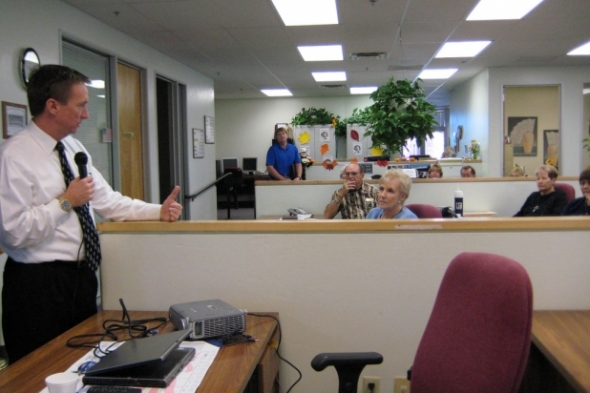A Manager’s Response to Workplace Suicide
There are more than 41,000 suicide deaths per year in the U.S; the majority occur among people of working age. This number alone can dramatically affect the workplace. Add to this number that there are about six people affected, many being coworkers, for every suicide death, and the potential impact to the workplace quickly becomes evident.
Even workplaces with the most comprehensive suicide prevention policies and programs are not immune from a suicide that occurs at work or off-site. Because of the high likelihood that at some point a workplace will experience an employee suicide (or a suicide by a client, vendor or employee family member), it is critical that managers know how to respond and facilitate appropriate “postvention” services designed to help employees and the organization recover and return to normal. Postvention services include psychological first aid, crisis intervention and other support services that managers can facilitate for employees following a workplace suicide or suicide attempt.
Continue reading “A Manager’s Response to Workplace Suicide”Why Invest in Suicide Prevention?
While no detailed and independent data exists on the cost of suicide and suicidal behavior to the Australian economy, every death does have a financial impact. A cost estimate produced by Mendoza and Rosenberg in 2010 proposed a plausible estimate to the Australian economy of $17.5 billion per year. This figure included estimated productivity costs.
Research conducted by SuperFriend and IFS Insurance Solutions estimated that, in 2012, death claims paid out in Australia by group life insurers in superannuation where suicide was the “known” cause of death amounted to more than $100 million. For some SuperFriend partner funds, suicide death claims account for more than 20% of their total death claims administered.
There is a relationship between stress and work-related suicide. While suicidal behavior is an extreme outcome of stress, significant productivity gains are to be had by managing workplace stress. Medibank private-commissioned research found that stress-related “presenteeism” (showing up at work but at far less than 100% capacity) and absenteeism cost the Australian economy $14.8 billion a year, with 3.2 days per worker lost each year because of stress.
Preventing Deaths Following a Suicide
Suicide continues to be among the most stigmatized topics of all human experiences. It is, therefore, characterized by fear, shame and misunderstanding. Myths include:
- “If we talk about suicide, it’s more likely to occur.”The truth is just the opposite.
- “It will never happen in my circle of friends, family and co-workers.” The truth is: Given the staggering statistics of how many Americans seriously contemplate, plan for and attempt suicide, chances are you know someone who is at serious risk right now.
Suicide Prevention: Talk About It at Work
Suicide is a serious public health problem — but is preventable.
Suicide has a dramatic impact on the workplace in both human and financial terms. According to the Centers for Disease Control and Prevention, suicide was the 10th-leading cause of death in the U.S. in 2010. There were 38,364 suicides—an average of 105 each day. In addition to the loss of life and suffering of surviving family members, colleagues and friends, the suicides resulted in an estimated $34.6 billion in combined medical and work loss costs.
Continue reading “Suicide Prevention: Talk About It at Work”




